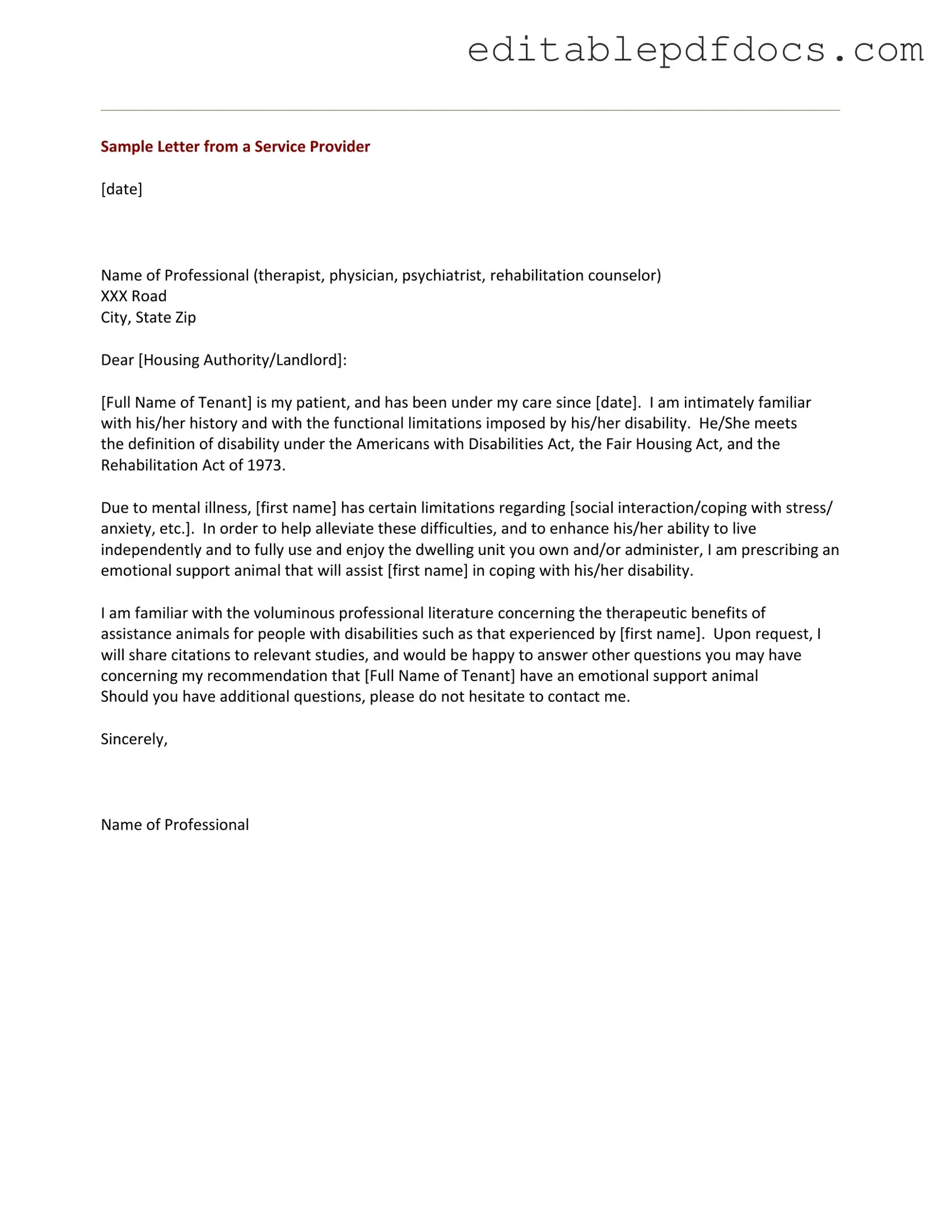Filling out an Emotional Support Animal (ESA) Letter form can be a straightforward process, but many individuals make common mistakes that can lead to complications. Understanding these pitfalls can help ensure that the letter is valid and effective.
One frequent error is providing incomplete information. Applicants often overlook sections that require specific details about their mental health condition or the animal. Omitting crucial information can result in a letter that lacks the necessary support for the ESA request.
Another mistake is failing to obtain the letter from a qualified mental health professional. Some individuals may attempt to create their own letters or use templates found online. However, only a licensed therapist, psychologist, or psychiatrist can issue a legitimate ESA letter. Without proper credentials, the letter may not be recognized by housing providers or airlines.
Many people also neglect to include the animal's details. The letter should specify the type of animal and its name. Leaving this information out can lead to confusion and may cause issues when presenting the letter to landlords or airlines.
Another common oversight is not keeping the letter updated. An ESA letter typically has a validity period, often one year. Failing to renew the letter can result in loss of rights to have the animal in certain settings, such as rental properties.
In addition, some individuals do not understand the difference between an ESA and a service animal. Misrepresenting the animal's purpose can lead to legal consequences. It's crucial to clearly state that the animal is an emotional support animal, not a service animal, as the two have different legal protections.
Lastly, people often underestimate the importance of clarity and professionalism in the letter. A poorly written letter, filled with errors or vague language, may raise suspicions. A well-structured, clear letter enhances credibility and acceptance.
